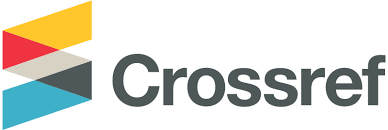MODEL SUAKA IKAN UNTUK PENGELOLAAN SUNGAI DI JAWA: STUDI DI SUNGAI WINONGO YOGYAKARTA
Abstract
Laju penurunan spesies dan populasi ikan di sungai-sungai di Jawa terus terjadi sehingga perlu sebuah model yang tepat untuk menghentikan fenomena tersebut. Salah satu konsep yang dapat dipertimbangkan adalah model suaka ikan. Model ini telah diperkenalkan oleh pemerintah sejak diberlakukannya Undang-Undang Nomor 31 Tahun 2004, namun tidak banyak sungai di Jawa yang mempraktikkan suaka ikan. Meskipun demikian ada sejumlah pihak yang mencoba mempraktikkan model ini di Sungai Winongo. Penelitian ini bertujuan untuk mendeskripsikan dan menganalisis faktor-faktor penting yang mendukung praktik suaka ikan di Sungai Winongo. Penelitian ini dilakukan berdasar pendekatan kualitatif deskriptif dengan menggunakan empat metode pengumpulan data, yakni: (i) observasi yang bersifat partisipatori, (ii) wawancara, (iii) dokumentasi dan reviu literatur, dan (iv) Focus Group Discussion (FGD). Hasil menunjukkan bahwa pelibatan masyarakat dalam suaka
ikan merupakan faktor penting mutlak; hal ini terutama karena masyarakat merupakan pemangku kepentingan utama, yang mampu menjaga sungai selama 24 jam, Namun, partisipasi masyarakat dalam program suaka ikan murni konservasi sulit terjadi karena tidak ada keuntungan yang didapat. Penelitian merekomendasikan dilakukannya modifikasi model suaka ikan. Kerangka model suaka ikan harus mengakomodasikan dua aspek sekaligus, yakni aspek konservasi dan aspek kepentingan ekonomi masyarakat. Kedua aspek tersebut dapat terakomodir dalam suaka ikan yang diterapkan dengan sistem zonasi. Modifikasi suaka ikan dari murni konservasi ke model zonasi ini bisa menjadi alternatif model kebijakan pengelolaan sungai di Jawa.
Title: Fish Sanctuary Model For River Management In Java: Study In Winongo River Yogyakarta
The decline of species and population fish in Java rivers continually occurs. There is a need for a breakthrough related to the river management model to discontinue the phenomenon. One of the concepts to discontinue the decreasing rate is through fish asylum. The government has introduced this model since the enactment of Law Number 31 of 2004, but not many rivers in Java have practiced the fish asylum. However, there is a group of people attempting to practice the fisheries reserve in Winongo River. This research aims to describe and analyze some of important factors that enable the fisheries reserve in Winongo River. This research was conducted using a qualitative descriptive method using four data collection methods, namely participatory observation, interviews, documentation-literature, and Focus Group Discussion (FGD). This research found that the community’s involvement in fisheries reserves is needed since the community becomes the only stakeholders that can maintain the river.
However, the community participation in fisheries reserve program using pure conservation seemed hard to be realized considering no profit obtained by the community. Therefore, a modification of the fisheries reserve model is needed to be done. Fisheries reserve needs to concern with the conservational aspect and the economic interest of the community. Both principles can be accommodated in the zone Fisheries reserve model. The modification of fisheries reserve from the pure conservation to zone model can be an alternative for the policy model in river management in Java.
Keywords
Full Text:
PDFReferences
Aribowo, H., Wirapraja, L., & Putra, Y. D. (2018). Implementasi kolaborasi model pentahelix dalam rangka mengembangkan potensi pariwisata di Jawa Timur serta meningkatkan perekonomian domestik. Jurnal MEBIS: Manajemen Dan Bisnis, 3(1), 31–38. https://doi.org/10.33005/mebis.v3i1.21
Arin, T., & Kramer, R. A. (2002). Divers’ willingness to pay to visit marine sanctuaries: an exploratory studye. Ocean & Coastal Management, 45(2–3), 171–183. https://doi.org/10.1016/S0964-5691(02)00049-2
Asyari. (2014). Suaka perikanan (reservat), salah satu bentuk konservasi di perairan darat. Prosiding Seminar Nasional Limnologi VII: Pengelolaan Perairan Darat, 522–539.
Budijanto, D., Sibuea, F., Widiantini, W., Indrayani, Y. A., Wardah, Ismandari, F., & Susanti, M. I. (2019). Profil kesehatan Indonesia tahun 2018. Kementrian Kesehatan Republik Indonesia. https://pusdatin.kemkes.go.id/resources/download/pusdatin/profil-kesehatan-indonesia/PROFIL_KESEHATAN_2018_1.pdf
Cook, D., Malinauskaite, L., Roman, J., Davíðsdóttir, B., & Ögmundardóttir, H. (2019). Whale sanctuaries – An analysis of their contribution to marine ecosystem-based management. Ocean & Coastal Management, 182. https://doi.org/https://doi.org/10.1016/j.ocecoaman.2019.104987
Undang-undang Republik Indonesia Nomer 31 Tahun 2004 tentang perikanan, 31 (2004) (testimony of DPR dan Pemerintah RI). https://www.dpr.go.id/dokjdih/document/uu/32.pdf
Undang-undang Nomor 17 Tahun 2019 tentang Sumber Daya Air, 17 (2019) (testimony of DPR dan Pemerintah RI).
Erbaugh, J. T. (2019). Responsibilization and social forestry in Indonesia. Forest Policy and Economics, 109, 1–9. https://doi.org/10.1016/j.forpol.2019.102019
Fan, M., & Yu-tingXiao. (2020). Impacts of the grain for Green Program on the spatial pattern of land uses and ecosystem services in mountainous settlements in southwest China. Global Ecology and Conservation, 21, 1–23. https://doi.org/10.1016/j.gecco.2019.e00806
Fox, C. A., Reo, N. J., Turner, D. A., Cook, J., Dituri, F., Fessell, B., Jenkins, J., Johnson, A., Rakena, T. M., Riley, C., Turner, A., Williams, J., & Wilson, M. (2017). “The river is us; the river is in our veins”: re-defining river restoration in three Indigenous communities. Sustainability Science, 12, 521–533. https://doi.org/10.1007/s11625-016-0421-1
Fumagalli, R. (2020). How thin rational choice theory explains choices. Studies in History and Philosophy of Science Part A, 83, 63–74. https://doi.org/10.1016/j.shpsa.2020.03.003
Gaffar, A. K., & Muthmainah, D. (2010). Pengelolaan sumberdaya perikanan sungai Musi. In Monograf perikanan perairan Sungai Musi (pp. 247–256). Balai Penelitian Perikanan Perairan Umum.
Garg, T., Hamilton, S. E., Hochard, J. P., Kresch, E. P., & Talbot, J. (2018). (Not so) gently down the stream: River pollution and health in Indonesia. Journal of Environmental Economics and Management, 92, 35–53. https://doi.org/doi.org/10.1016/j.jeem.2018.08.011
Hadiaty, R. K. (2011). Diversitas dan hilangnya jenis-jenis ikan di sungai Ciliwung dan sungai Cisadane. Berita Biologi, 10(4), 117–123. https://doi.org/https://doi.org/10.14203/beritabiologi.v10i4.767
Jaya, P. H. I. (2020). Media sosial, komunikasi pembangunan, dan munculnya kelompok-kelompok berdaya. Jurnal Kajian Komunikasi, 8(2), 166–178. https://doi.org/10.24198/jkk.v8i2.16469
K.Sahide, M. A., Fisher, M. R., Erbaugh, J. T., Intarini, D., Dharmiasih, W., Makmur, M., Faturachmat, F., Verheijen, B., & Maryudi, A. (2020). The boom of social forestry policy and the bust of social forests in Indonesia: Developing and applying an access-exclusion framework to assess policy outcomes. Forest Policy and Economics, 120. https://doi.org/10.1016/j.forpol.2020.102290
Muslim. (2012). Perikanan rawa lebak lebung Sumatra Barat. Unsri Press.
Nguyen, T. T. T., & Silva, S. S. De. (2006). Freshwater finfish biodiversity and conservation: an Asian perspective. Biodiversity & Conservation, 15, 3543–3568. https://doi.org/10.1007/s10531-005-0312-8
Oktaviani, D., Dharmadi, D., & Puspasari, R. (2011). Upaya konservasi keanekaragaman hayati ikan perairan umum daratan di Jawa. Jurnal Kebijakan Perikanan Indonesia, 3(1), 27–36. https://doi.org/http://dx.doi.org/10.15578/jkpi.3.1.2011.27-36
Oktaviani, D., Prianto, E., & Puspasari, R. (2016). Penguatan kearifan lokal sebagai landasan pengelolaan perikanan perairan umum daratan di Sumatera. Jurnal Kebijakan Perikanan Indonesia, 8(1), 1–12.
Paterson-Shallard, H., Fisher, K., Parsons, M., & Makey, L. (2020). Holistic approaches to river restoration in Aotearoa New Zealand. Environmental Science and Policy, 106, 250–259. https://doi.org/10.1016/j.envsci.2019.12.013
Prasetyo, D. (2006). Kegiatan penangkapan ikan di suaka perikanan Sungai Sambujur Daerah Aliran Sungai Barito Bagian Tengah, Kalimantan Selatan. Jurnal Perikanan, 8(2), 239–246. https://doi.org/10.22146/jfs.146
Purba, W. S., Safitri, P. A., & Andianti, R. (2017). Statistik lingkungan hidup Indonesia. Badan Pusat Statistik.
Sahri, A., Mustika, P. L. K., Dewanto, H. Y., & Murk, A. J. (2020). A critical review of marine mammal governance and protection in Indonesia. Marine Policy, 117. https://doi.org/https://doi.org/10.1016/j.marpol.2020.103893
Syafei, L. S. (2017). No Title. Jurnal Penyuluhan Kelautan Dan Perikanan Indonesia, 11(1), 48–62.
Utomo, A. D. (2016). Strategi pegelolaan suaka perikanan rawa banjiran di Sumatera dan Kalimantan. Jurnal Kebijakan Perikanan Indonesia, 8(1), 13–20.
Yassine, R., Pérès, F., Frysou, O., Roux, H., & Cassan, L. (2020). Lessons learnt from the application of a participatory modelling approach in the framework of a river restoration project: case of the Gave de Pau River, Hautes-Pyrénées, France. IFAC-PapersOnLine, 53(2), 16671–16678. https://doi.org/10.1016/j.ifacol.2020.12.1097
Yuliaty, C., & Priyatna, F. N. (2014). Lubuk larangan: dinamika pengetahuan lokal masyarakat dalam pengelolaan sumber daya perikanan perairan sungai di Kabupaten Lima Puluh Kota. Jurnal Sosial Ekonomi Kelautan Dan Perikanan, 9(1), 115–125. https://doi.org/10.15578/jsekp.v9i1.1189
DOI: http://dx.doi.org/10.15578/jksekp.v11i2.9996
Indexed by:
---------------------------------------------------------------------------------------
Published by
Research Center for Marine and Fisheries Socio-Economic
in collaboration with
Indonesian Marine and Fisheries Socio-Economics Research Network
This work is licensed under a Creative Commons Attribution-NonCommercial-ShareAlike 4.0 International License.

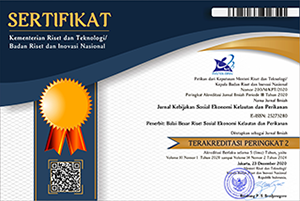
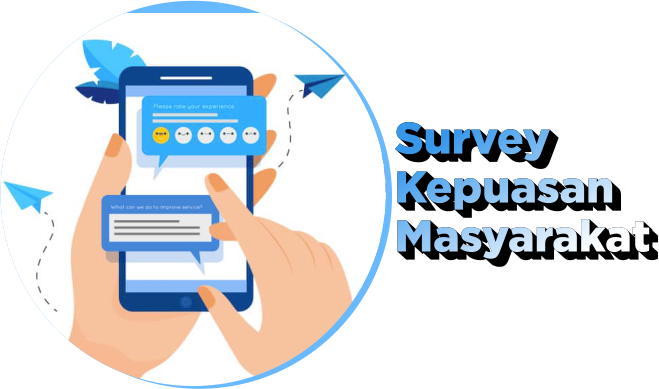






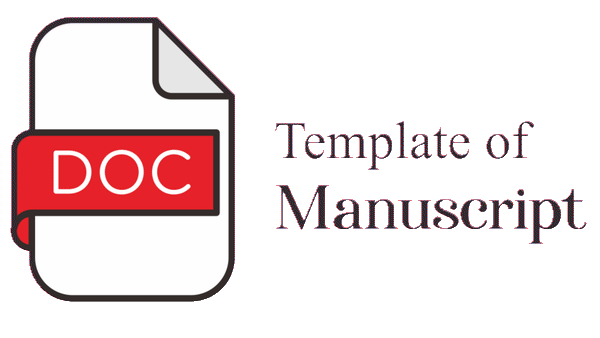
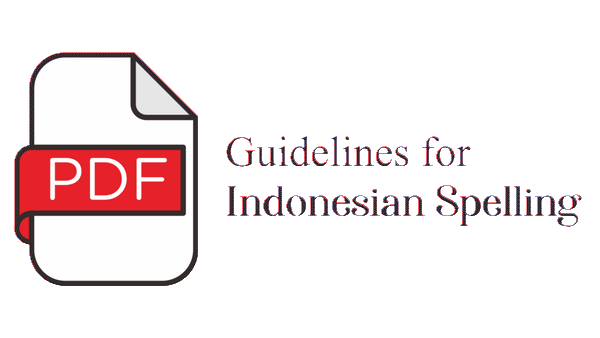
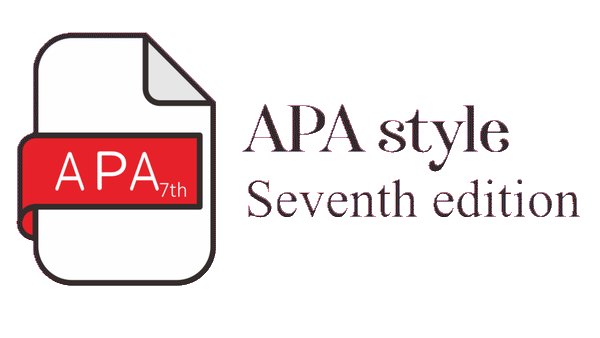


3.png)

